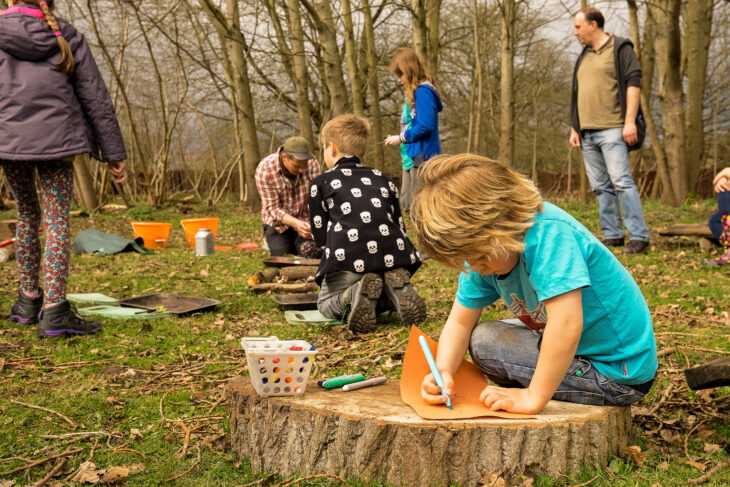Collecting finds and recording what they’ve seen is a great way for children to remember their adventures. By arranging items such as fallen leaves, twigs, and seed cases onto a page, the children interact with nature in a tactile way. A scrapbook is a big, colourful, fun way to keep a record – there’s no need to add complex writing.
Collecting, arranging, cutting, sticking and colouring are all great for developing fine motor skills. While fun for all ages, this makes a scrapbook the ideal activity for younger ones.
Some children might like to have a go at keeping a nature diary – using words, drawings and photos to record their experiences with nature.

What you will need:
- Access to a local greenspace and/or garden
- A bag to collect items in (optional)
- A scrapbook (or pieces of paper, which you can then attach together)
- Scissors
- Glue or sticky tape
- Crayons or felt tip pens
How to make your nature scrapbook:
- Take a walk to a local greenspace, or around your garden, and collect natural items. Before starting, set boundaries with your children so that they know what area to stay in. Make sure you know your area and remind children about any poisonous or prickly plants to avoid!
- Try to only take natural objects that have fallen on the ground. Try to avoid picking from living plants. If the children would really like to collect something that’s still living, you could encourage them to take a photo and use this instead!
- Carry the items back home or to school.
- Ask the children to arrange the items from your walk onto the pages of their scrapbook. It’s best to let them decide how to do this – allowing creativity and expression.
- Stick the items down.
- To add some science and language skills, you could help the children to add simple labels to their pages and nature finds. For younger children you could make these, help them to cut and stick them down, and read the words together.
- Build up your scrapbook over time, to explore the seasons and different types of weather.
Share photos of your scrapbooks using #DiscoverLearnPlay
